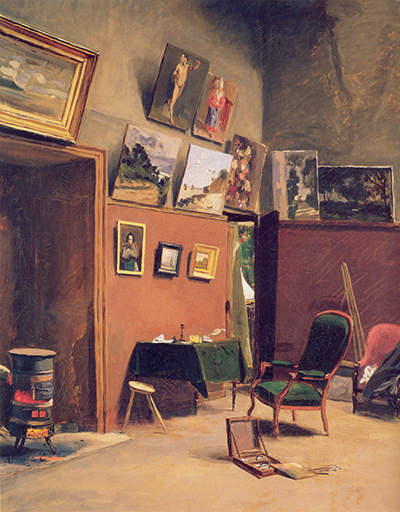Frédéric Bazille painted Studio in the Rue de Furstenberg in 1866, and the painting gives us a fascinating glimpse into the life of the artist, depicting the studio he shared with Claude Monet at this time. The painting now resides in the Musée Fabre in Montpellier, France and shows an impressionist style which represents the movement that Bazille became part of during this era.
Bazille was born in Montpellier in Languedoc-Roussillon to a wealthy family and he became interested in painting from an early age after seeing some artwork by Delacroix.
Bazille moved to Paris in 1862 where he was introduced to impressionism through meetings with Alfred Sisley and Pierre-Auguste Renoir - becoming very interested in this technique he began studying at the studio of Charles Gleyre, and he began to paint full-time in 1864 and became good friends with other up and coming impressionist artists such as Monet and Manet. Bazille showed a precocious talent and painted some of his better known works when he was only 23 years old - these include Family Reunion and Pink Dress.
Bazille was strongly influenced by the impressionist school of art and a number of his works show the plein air style of painting which was very popular at this time. This was an outdoor style of painting introduced by the Romantics and continued the tradition of sketching from nature and setting scenes and figures in open air vistas. In his painting The Studio on Rue Furstenberg the artist continues to use an impressionist style but gives an insight into the life of the artists, with paintings dotted around and a desk and paintbox open on the floor giving an indication of works in progress. The studio was also in the same building as used by Delacroix from 1857 until his death, and it is easy to imagine the artists having creative debates in the stereotypically romantic but slightly jaded setting of the studio.
Bazille's technique is an inherent part of the French impressionist movement during the 19th century and through the Studio in the Rue de Furstenberg, although not one of his major art pieces, we get a detailed and tantalising depiction of the life of the artist and his peers. The whole building where the studio is based has now become the Musée national Eugène Delacroix and is a lasting legacy to the artists of this period.




